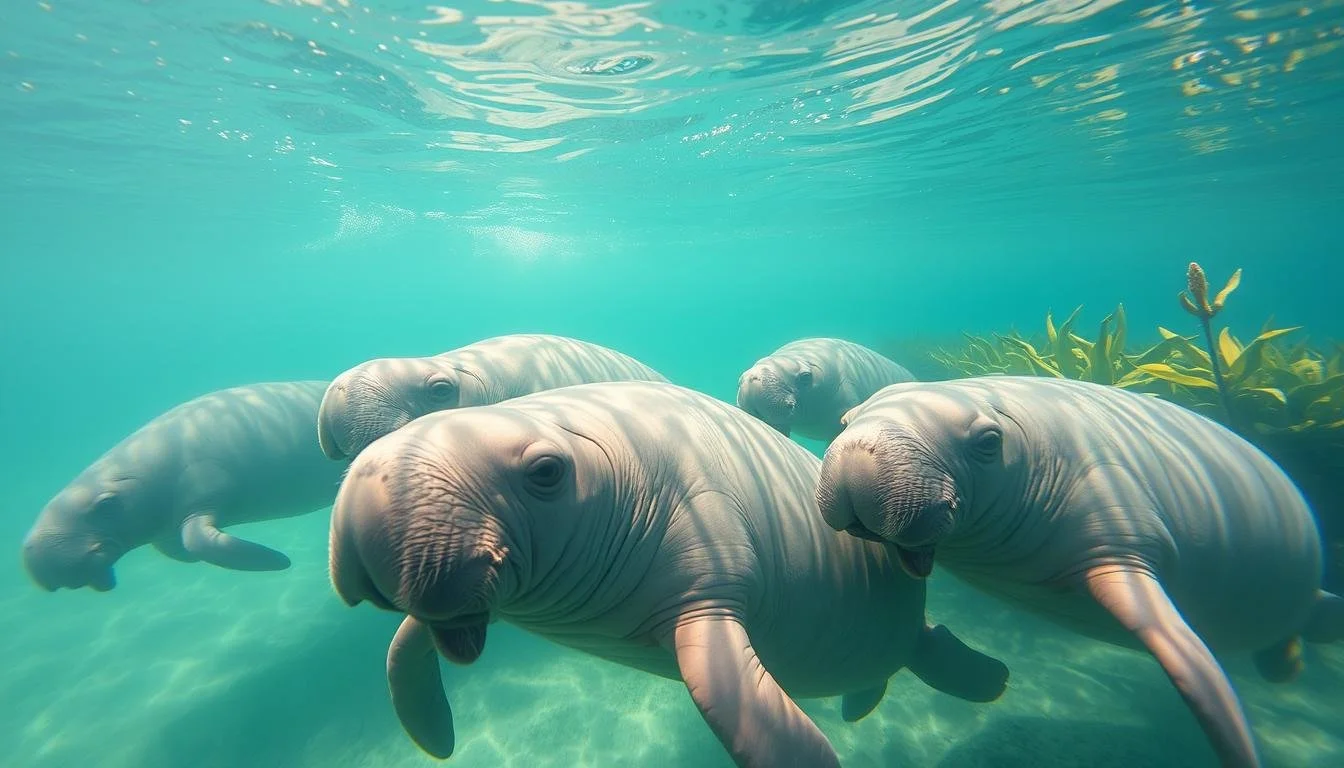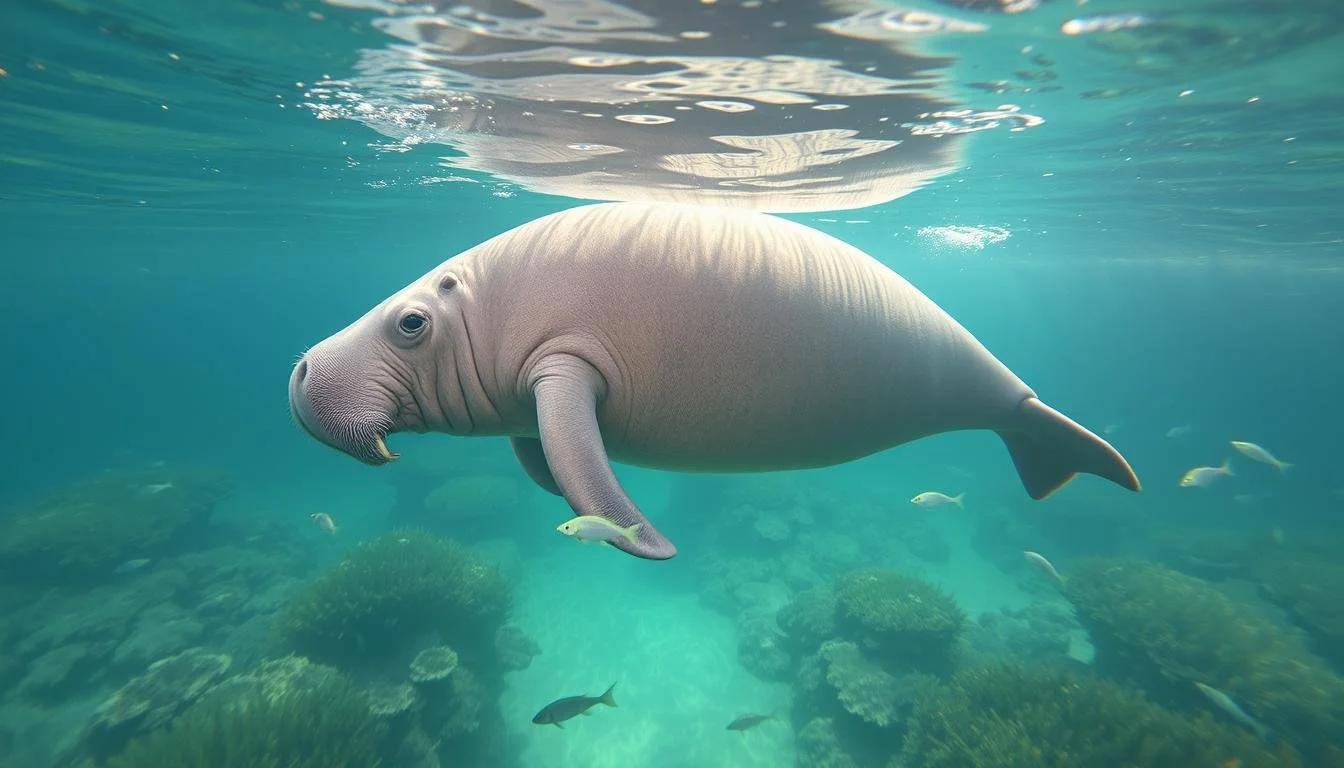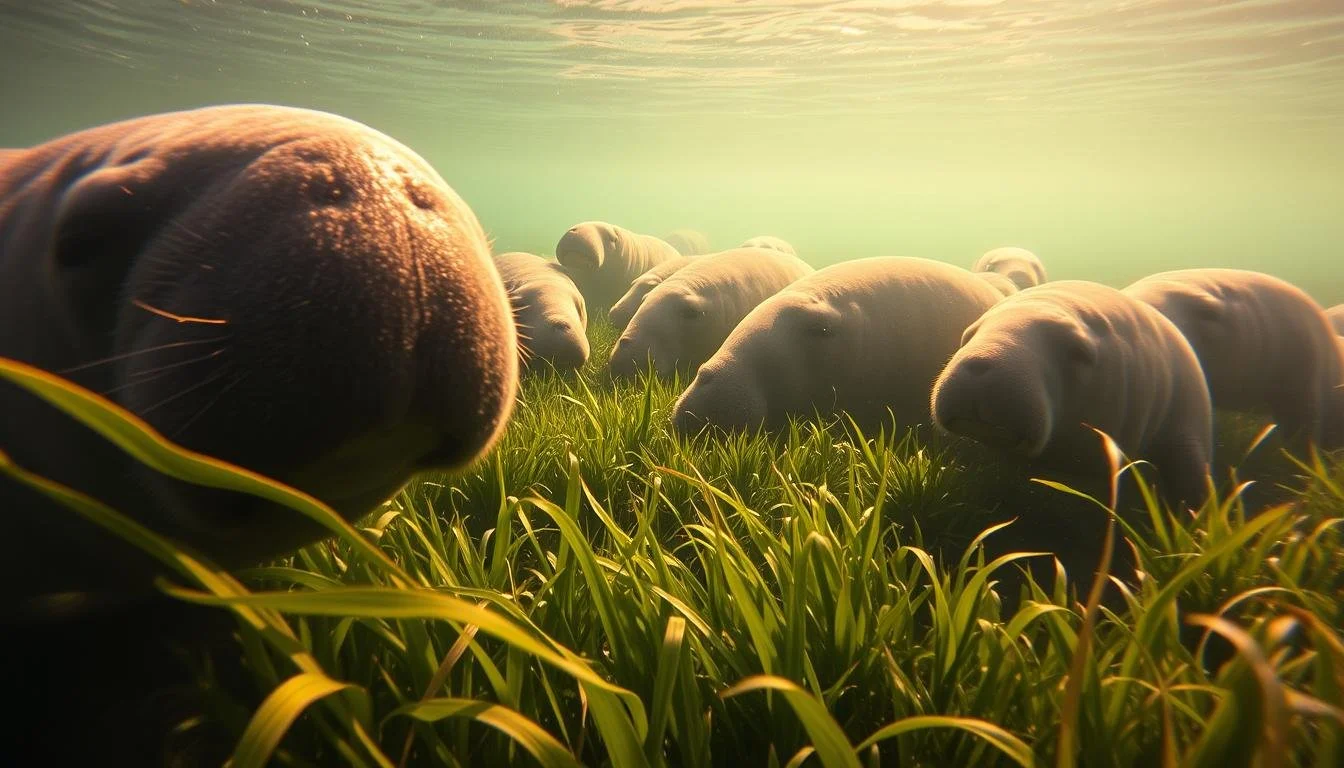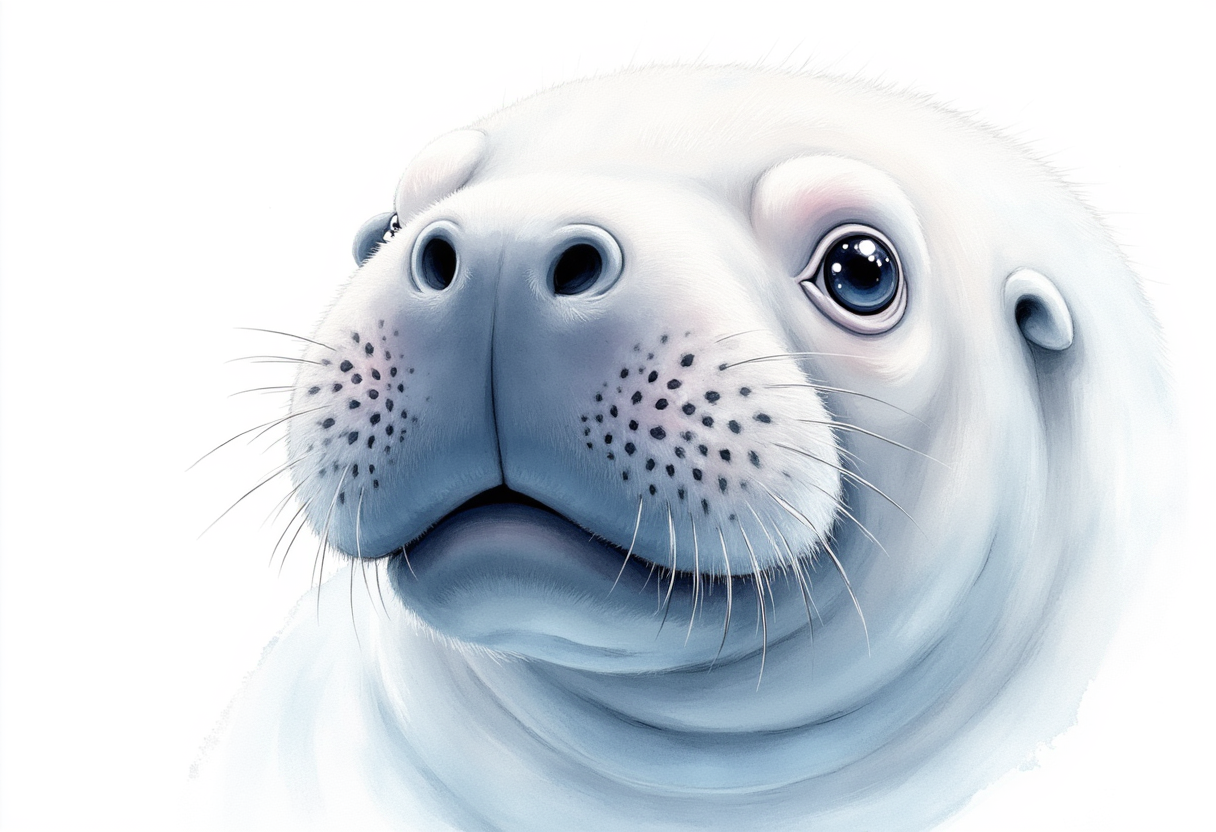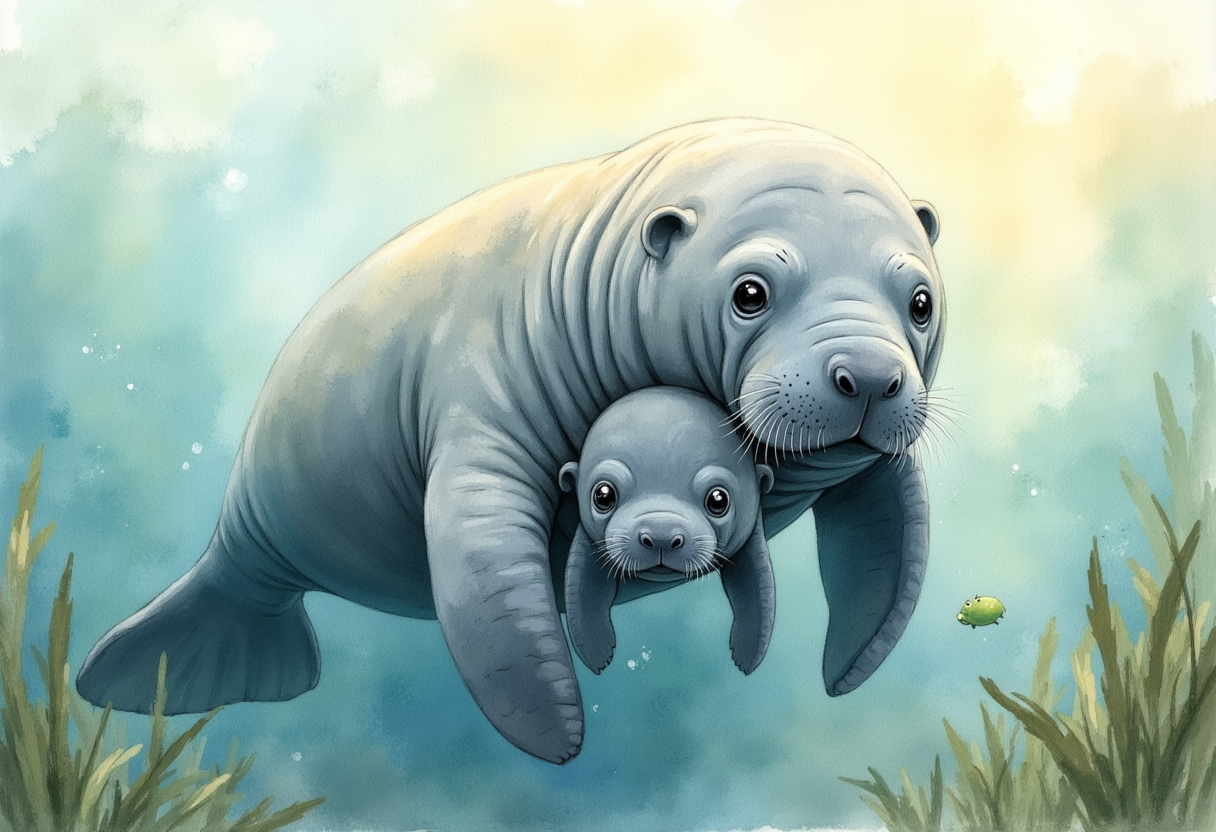The Secret Life of Florida Manatees
Florida's gentle giants, the Florida manatees, have fascinated people for centuries. These large, slow-moving aquatic mammals are a beloved part of the state's ecosystem.
Manatees
Manatees
Manatees are known for their curious nature and friendly demeanor. Some interesting manatee facts include their ability to swim in shallow waters and their herbivorous diet, which consists mainly of seagrasses and other aquatic plants.
The article will delve into the biology, behavior, and conservation status of these amazing creatures, providing insights into their manatee behavior and the challenges they face.
Key Takeaways
Manatees are large aquatic mammals native to Florida.
They are herbivores, feeding on seagrasses and aquatic plants.
Manatees are known for their friendly and curious nature.
Their behavior is influenced by their environment and human interactions.
Conservation efforts are crucial to protecting manatee populations.
Florida's Gentle Giants: Meet the Manatees
Manatees have been swimming in Florida's waters for centuries, playing a vital role in the state's ecological balance.
These gentle giants are an integral part of Florida's natural heritage, and their presence has significant implications for the state's ecosystem.
What Makes Manatees Unique
Manatees are slow-moving aquatic mammals that feed on a variety of aquatic plants. Their herbivorous diet and gentle nature make them a unique and important component of Florida's ecosystem. Manatees can grow up to 13 feet in length and weigh over 1,300 pounds, making them a substantial presence in the waters they inhabit.
The Significance of Manatees in Florida's Ecosystem
Manatees play a crucial role in maintaining the balance of Florida's ecosystem.
Consuming aquatic plants helps to maintain the health of the waterways and prevents the overgrowth of vegetation.
This, in turn, supports the biodiversity of the ecosystem, allowing other species to thrive.
Historical Presence in Florida Waters
Manatees have been present in Florida's waters for thousands of years,
with evidence of their existence dating back to the early Native American inhabitants of the region.
The historical significance of manatees in Florida is a testament to the state's rich natural heritage and the importance of preserving this legacy for future generations.
Physical Characteristics of Florida Manatees
Florida manatees are fascinating creatures with distinct physical characteristics that enable them to thrive in their environment.
Their size, appearance, and unique anatomical features make them well-suited to their aquatic habitat.
Size and Appearance
Florida manatees are large marine mammals that can grow up to 13 feet in length and weigh between 440-550 pounds, with some individuals reaching up to 1,300 pounds. They have a distinctive, rounded body shape,
with a flat tail that they use for propulsion through the water. Their skin is typically gray or brown in color,
and it can appear wrinkled due to the presence of numerous wrinkles and folds.
Manatee Swimming
Unique Anatomical Features
Manatees have several unique anatomical features that enable them to thrive in their environment.
One of the most notable is their specialized lungs and breathing system, which allows them to hold their breath for extended periods.
Specialized Lungs and Breathing
Manatees have a pair of lungs that are adapted to their aquatic environment.
They can hold their breath for up to 20 minutes, although the average time is around 3-5 minutes. When they surface, they can take in a large amount of air, which helps them to conserve energy.
Teeth and Jaw Structure
Manatees have a unique dental structure, with marching molars that are constantly being replaced throughout their lives.
Their jaw is designed for grinding and crushing plant material, which is their primary source of food.
Sensory Abilities and Adaptations
Manatees have relatively poor eyesight, but they have a highly developed sense of touch and can detect vibrations in the water.
They use their flexible lips and whiskers to navigate their environment and locate food sources.
As
"Manatees rely heavily on their sense of touch to navigate their surroundings,
using their lips and whiskers to detect changes in their environment."
The Natural Habitat of Florida Manatees
The natural habitat of Florida manatees encompasses a range of freshwater and saltwater ecosystems.
These gentle creatures are found in various aquatic environments throughout Florida, adapting to different water conditions based on the season.
Freshwater vs. Saltwater Environments
Manatees are known to inhabit both freshwater and saltwater environments.
During colder months, they tend to congregate in freshwater springs and warm water refuges, which provide them with the warmth they need to survive.
In contrast, during warmer months, manatees can be found in saltwater environments,
including estuaries and coastal areas, where they feed on abundant vegetation.
Seasonal Migration Patterns
Manatees migrate seasonally to find suitable habitats. As temperatures drop, t
hey move towards warmer waters, often gathering in large numbers at power plant discharge canals and natural springs.
Key Manatee Hotspots in Florida
Florida is home to numerous manatee hotspots, including:
Blue Spring State Park
Crystal River National Wildlife Refuge
Indian River Lagoon
Springs and Warm Water Refuges
Springs and warm water refuges are crucial for manatee survival during the winter. These areas provide a haven from cold temperatures, allowing manatees to conserve energy.
Coastal Waterways and Estuaries
Coastal waterways and estuaries serve as important feeding grounds for manatees.
The abundant vegetation in these areas supports the dietary needs of manatees.
Habitat TypeCharacteristicsManatee ActivitiesFreshwater SpringsWarm,
clear waterResting, socializingCoastal EstuariesBrackish water, abundant vegetationFeeding, migrating
Manatee diet
"Manatees are incredibly adaptable creatures, able to thrive in a variety of aquatic environments.
Their ability to migrate between freshwater and saltwater habitats is a testament to their resilience."
Daily Life and Behavior of Manatees
Florida manatees exhibit fascinating daily behaviors that are crucial to their survival in their natural habitat.
Their daily activities are a mix of swimming, resting, and feeding, which are essential for their well-being.
Swimming and Movement Patterns
Manatees are known for their slow and graceful movements. They swim with their tail,
using a horizontal fluke motion, allowing them to maneuver through the water with ease.
Resting Behaviors
Manatees need to rest regularly, often staying underwater for up to 20 minutes before surfacing for air.
They can rest with their eyes open or closed, and sometimes they rest in a group.
Communication Methods
Manatees communicate using a variety of sounds, including chirps, squeaks, and grunts.
They also use body language to convey information and express emotions.
Intelligence and Learning Abilities
Manatees are considered intelligent animals, capable of learning and adapting to their environment.
They have been observed exhibiting complex behaviors, such as recognizing and interacting with individual members of their group.
BehaviorDescriptionSwimmingManatees use a horizontal fluke motion to swim. Resting manatees rest underwater for up to 20 minutes.CommunicationManatees use sounds and body language to communicate.
Manatee Social Structure and Relationships
The social structure of manatees is a fascinating aspect of their behavior,
showcasing strong family ties and interactive dynamics. Manatees are often perceived as solitary animals, but they actually form complex social bonds.
Family Bonds
Manatees are known to form close family bonds, particularly between mothers and their calves.
These bonds are crucial for the young manatees' survival and development.
The maternal care exhibited by manatees is one of the most significant aspects of their social behavior, ensuring that the calves learn essential survival skills.
Group Dynamics
During the winter, manatees often gather in large groups at warm-water refuges.
These aggregations can range from a few individuals to hundreds of manatees.
The dynamics within these groups can be quite complex, with manatees engaging in various forms of interaction,
including gentle touching and vocalizations.
Interactions with Other Species
Manatees also interact with other species in their environment. For example,
they are known to be cleaned by fish that remove parasites from their skin.
These interactions highlight the integrated role manatees play in their ecosystems.
Play Behavior and Social Learning
Observations have shown that manatees engage in play behavior,
which is believed to be an important aspect of their social learning and development.
This play can involve various activities, such as swimming games and exploring their surroundings.
Such behaviors not only help manatees develop their motor skills but also contribute to their social bonding.
In conclusion, the social structure and relationships of manatees are multifaceted and play a vital role in their lives.
Understanding these aspects is crucial for conservation efforts and appreciating these gentle creatures.

